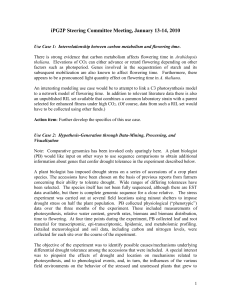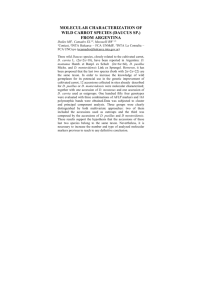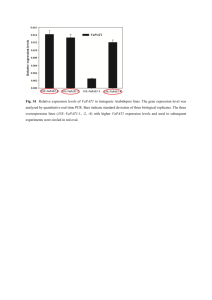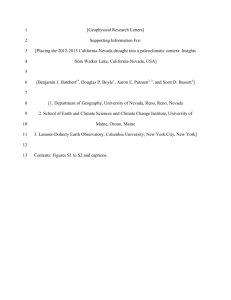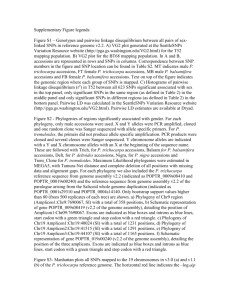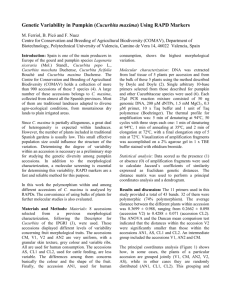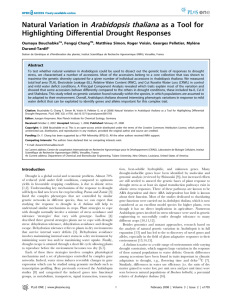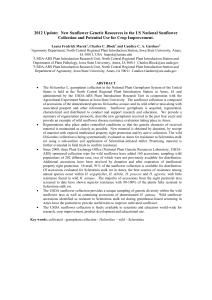Use Case Scenario
advertisement
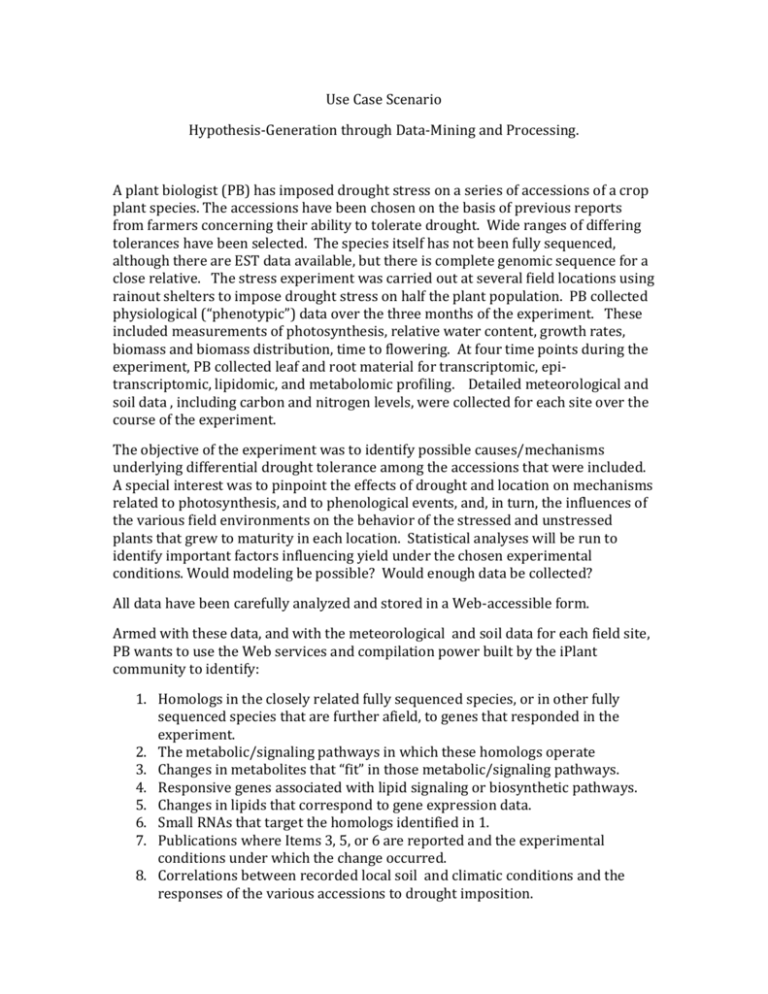
Use Case Scenario Hypothesis-Generation through Data-Mining and Processing. A plant biologist (PB) has imposed drought stress on a series of accessions of a crop plant species. The accessions have been chosen on the basis of previous reports from farmers concerning their ability to tolerate drought. Wide ranges of differing tolerances have been selected. The species itself has not been fully sequenced, although there are EST data available, but there is complete genomic sequence for a close relative. The stress experiment was carried out at several field locations using rainout shelters to impose drought stress on half the plant population. PB collected physiological (“phenotypic”) data over the three months of the experiment. These included measurements of photosynthesis, relative water content, growth rates, biomass and biomass distribution, time to flowering. At four time points during the experiment, PB collected leaf and root material for transcriptomic, epitranscriptomic, lipidomic, and metabolomic profiling. Detailed meteorological and soil data , including carbon and nitrogen levels, were collected for each site over the course of the experiment. The objective of the experiment was to identify possible causes/mechanisms underlying differential drought tolerance among the accessions that were included. A special interest was to pinpoint the effects of drought and location on mechanisms related to photosynthesis, and to phenological events, and, in turn, the influences of the various field environments on the behavior of the stressed and unstressed plants that grew to maturity in each location. Statistical analyses will be run to identify important factors influencing yield under the chosen experimental conditions. Would modeling be possible? Would enough data be collected? All data have been carefully analyzed and stored in a Web-accessible form. Armed with these data, and with the meteorological and soil data for each field site, PB wants to use the Web services and compilation power built by the iPlant community to identify: 1. Homologs in the closely related fully sequenced species, or in other fully sequenced species that are further afield, to genes that responded in the experiment. 2. The metabolic/signaling pathways in which these homologs operate 3. Changes in metabolites that “fit” in those metabolic/signaling pathways. 4. Responsive genes associated with lipid signaling or biosynthetic pathways. 5. Changes in lipids that correspond to gene expression data. 6. Small RNAs that target the homologs identified in 1. 7. Publications where Items 3, 5, or 6 are reported and the experimental conditions under which the change occurred. 8. Correlations between recorded local soil and climatic conditions and the responses of the various accessions to drought imposition. Information obtained in 1-8 above, will be compiled, as PB proceeds through Steps 1-5. Examples of data mining, compilation, and visualization tasks: 1. Use comparative genomic databases to identify homologs of genes of interest in a fully sequenced genome. (“ reference genome”). 2. Migrate that result to sites showing relevant metabolic and/or signaling pathways. Identify roles of genes of interest in these pathways. 3. Paint data from metabolite profiling database on to pathways identified in 2. 4. Repeat this process, using lipidomics data. 5. Use databases dedicated to the “reference genome” to identify small RNAs that target homologs of the genes of interest. 6. Devise a tool to exhibit, at will, any aspect of 1-5, in an easily storable form for the user. 7. Relate physiological data to 1-5, wherever possible. Devise a tool for visualizing and storing the result, in each case. For example, a result might be a correlation between source-sink partitioning and the degree of inhibition of photosynthesis by drought in 80% of the accessions, an in all but one of the field locations. The knowledge and intelligence of PB are then harnessed to devise one or more hypotheses that suggest mechanistic bases for the range in tolerances already known for the collection of accessions of the crop plant.
